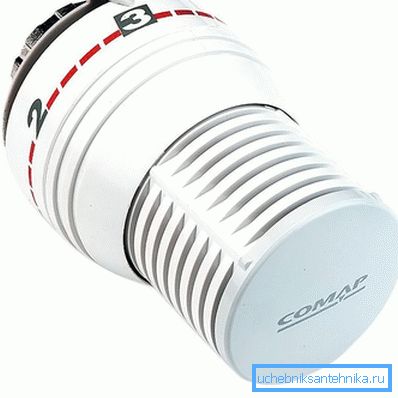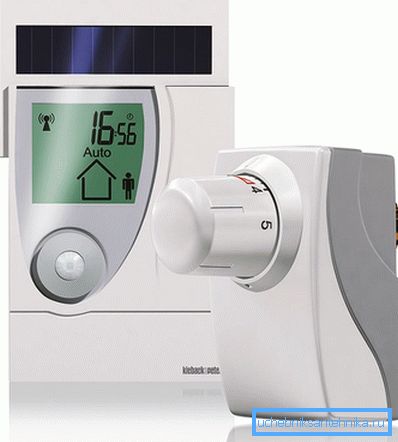How to regulate the temperature in radiators
Comfortable stay in the room is the first priority of each owner of the house / apartment. In winter, it is most relevant. Creating an optimal temperature in a dwelling does not always depend on the work of public utilities, as it may seem at first glance. Even if a system connected to the central heating is installed in the apartment, it is possible to change the situation to some extent. How to regulate the temperature in the radiators and will be discussed in this article.
General moments

To begin with, it is necessary to determine the essence of the issue under consideration, due to which a general course of further actions will be formed. So, the room heating system, regardless of its type, works on the principle of heat exchange between the heating elements and the air in the room. Most often, this process is provided by a system of pipes and batteries. Hot coolant circulates inside the elements and heats the walls of the radiators. From this logically follow further measures to regulate the temperature in the home.
Temperature variations
There are several ways to accomplish the task, and each of them must be considered separately.
Installation of valves and taps

One of the simplest and most understandable options for adjusting the temperature in radiators is the installation of special valves and valves. The bottom line is that if the room temperature is set too high, and the adjustment of the coolant itself is impossible (central heating), then it can be reduced to the radiators. This is achieved by installing control valves in the system. The most common use of spherical elements is that, by simple rotation, cut off the flow of coolant inside the batteries. It should be noted that this option is relevant only if it is necessary to reduce the temperature in the room. To make the batteries hotter these valves can not.
Spherical taps are not recommended for partial shut-off of the water flow, as this will greatly reduce their service life.
Automatic adjustment setting
Another embodiment of temperature control in radiators is the installation of automatic thermal heads and servo drives. In fact, these elements are the same valves, but differ in that they operate in automatic mode.

Thermal head is a regulating device filled with a special composition that reacts to changes in temperature. It also provides for the presence of a control valve, through which the desired temperature is set. As a result, when a certain temperature is reached, the composition inside the valve expands, acting on the three-way valve inlet valve, and the flow of coolant into the radiator is reduced or interrupted as a whole. When the temperature decreases, the reactive composition is compressed, and the access to the coolant opens. Such devices can be installed according to the principle of a valve - to be built into the pipe, or to be mounted with an external sensor.

Another option for automatic temperature control is the installation of servo drives that control the flow of coolant to a specific battery. It is worth noting that such devices are usually used in a complex, for example, in systems "smart home". The principle of their operation is similar to that used in thermal heads. The difference lies in the fact that the effect on the valve is carried out with the help of a small electric motor, as a result of which the taps open smoothly, which means that the load on the system elements is also reduced.

However, it must be understood that the operation of servo drives is regulated by means of a sensor system and a processor processing information. And this makes this method of adjustment rather appropriate for an autonomous heating system of a private household. But, in principle, installation is possible in conditions of centralized heating.

So, there are many options for temperature control in radiators. Before you make a specific decision, you need to review an overview of the actuators and thermal heads, as well as familiarize yourself with the characteristics of the valves. There is something to choose from, but it should be done correctly.
If you want to get acquainted with additional materials, we invite you to find out the answers to the following questions:
- How to choose a gas bypass boiler?
- What is a condensing boiler?
- How to install infrared carbon warm floor?
Video
This video provides one of the ways to adjust the temperature in radiators: